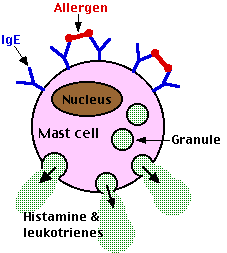Skin-prick testing is suggested in preference to in vitro-specific IgE antibody assays
Third, in individuals suspected of OA due to sensitizers, the expert panel suggests immunologic testing to identify sensitization to specific workplace allergens, when reliable and feasible, because a negative skin-prick test result with a validated occupational protein allergen test reagent has high negative predictive value. Skin-prick testing is suggested in preference to in vitro-specific IgE antibody assays. However, with the exception of a few, such as natural rubber latex and cat dander, standardized commercial skin test reagents for many occupational proteins are not available. The consensus document thereby underscores the great need to develop validated and standardized occupational allergens for skin testing. 
Fourth, there are different methods of objective confirmation of work relationship, including serial monitoring of peak expiratory flow or nonspecific bronchial hyperresponsiveness during a period at work, and a period off work as well as specific inhalation or workplace challenge testing. Since every test has potential false-positive and false-negative responses as outlined in the document, there are benefits of using multiple tests or repeating the same test.
In addition to the usual management of asthma using pharmacologic agents, the expert panel includes two other important considerations in the management of WRA. First, on the individual level, given the adverse employment and economic consequence of a diagnosis of OA, the practitioner should assist the patient to obtain compensation. Secondly, on the public health level, an individual diagnosis of OA represents a potential sentinel health event, and so his/her workplace should be evaluated to identify and prevent other cases of OA in the same setting. The expert panel, based on recent literature, also advises medical surveillance programs for secondary prevention, including questionnaire and spirometry and immunologic tests, where available, to identify individuals with preclinical disease or sensitization and remove them from further exposure.

Leave a Reply